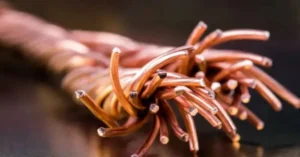Copper is one of the most widely used metals in the modern world. From electrical grids to telecommunications, and from precision audio cables to advanced scientific instruments, copper remains indispensable due to its exceptional electrical conductivity, thermal properties, and mechanical flexibility. But not all copper is created equal. Different refining and casting processes result in significant variations in purity, crystalline structure, and ultimately, performance.
Two of the most important terms that enthusiasts and professionals frequently encounter in high-end electronics and audio engineering are OCC (Ohno Continuous Casting) copper and OFC (Oxygen-Free Copper). Though both represent high-quality copper materials, they are distinct in their production methods, structural characteristics, and levels of conductivity.
This article provides a detailed examination of OCC and OFC copper wires, their differences, advantages, limitations, and practical applications, helping readers understand why the choice between the two matters in both industrial and consumer contexts.
Basics of Copper Purity
Copper, in its natural state, often contains impurities such as oxygen, sulfur, and metallic inclusions. While these impurities may not always prevent general applications, they have a significant impact on conductivity and signal integrity in sensitive applications.
- Impure copper: Contains oxygen and other elements, reducing conductivity.
- Oxygen-Free copper (OFC): Refined to eliminate oxygen and most impurities.
- Ohno Continuous Cast copper (OCC): Produced as nearly single-crystal copper, with ultra-high purity and minimal grain boundaries.
The fewer the impurities and grain boundaries, the more seamlessly electrons can flow—making these materials valuable in fields where precision and purity are paramount.
What Is OFC (Oxygen-Free Copper)?
OFC (Oxygen-Free Copper) is copper that has been refined to a purity level of around 99.95% with oxygen content reduced to less than 0.001%. It is produced through controlled melting and casting processes in oxygen-free environments.
Key Characteristics of OFC:
- Purity of 99.95% or higher.
- Multi-grain crystalline structure.
- Higher conductivity than standard copper.
- Widely available and cost-effective compared to 0CC.
Manufacturing Process of OFC:
- Melting: Copper is melted in a controlled atmosphere to prevent oxygen absorption.
- Casting: The molten copper is cast into billets with minimal exposure to oxygen.
- Rolling/Extrusion: The billets are rolled or extruded into wire form.
This process ensures that the copper has fewer voids and inclusions, making it superior to conventional copper but not at the level of 0CC.
What Is OCC (Ohno Continuous Casting) Copper?
OCC (Ohno Continuous Casting) copper is produced through a specialized casting method developed by Japanese professor Atsumi Ohno in the 1980s. Unlike traditional methods that result in multiple grains, the 0CC process creates long, continuous single crystals of copper with purity levels exceeding 99.999%.
Key Characteristics of 0CC:
- Purity of 99.999% (5N) or higher.
- Single-crystal or near-single-crystal structure.
- Virtually no grain boundaries, allowing electrons to flow without interruption.
- Superior conductivity and reduced signal loss compared to OFC.
Manufacturing Process of OCC:
- Seed Crystal Growth: Copper is drawn from a seed crystal in a controlled furnace.
- Slow Cooling: Extremely slow cooling rates allow the copper to solidify into continuous single-crystal structures.
- Wire Production: The resulting copper rods are processed into wires with minimal defects.
The result is copper of extraordinary quality, highly valued in audiophile cables, aerospace electronics, and scientific instrumentation.
Comparison: OCC vs. OFC
| Aspect | OFC (Oxygen-Free Copper) | OCC (Ohno Continuous Cast Copper) |
|---|---|---|
| Purity | ~99.95% | ~99.999% (5N) or higher |
| Structure | Multi-grain with boundaries | Near single-crystal, virtually no grain boundaries |
| Conductivity | High, suitable for most professional applications | Ultra-high, superior electron flow |
| Signal Loss | Low, but still influenced by grain boundaries | Extremely low, almost seamless signal transmission |
| Cost | Affordable | Expensive, due to specialized production |
| Applications | General audio, power cables, telecommunications | High-end audio, aerospace, scientific, precision tools |
Applications of OFC Copper
OFC is widely used in industries where high conductivity and reliability are essential but ultra-purity is not critical.
Key Applications:
- Audio Cables: Used in mid- to high-end speaker cables and headphone wires.
- Power Transmission: High-efficiency power cables in industrial systems.
- Telecommunications: Signal cables for telephone and data lines.
- Automotive Wiring: Ensures reliability under varied conditions.
- Medical Equipment: Electrodes and wiring requiring high conductivity.
Its balance of cost and performance makes OFC the standard choice for most professional and consumer uses.
Applications of OCC Copper
OCC copper is a niche material, often used where every fraction of conductivity and signal purity matters.
Key Applications:
- Audiophile Equipment: Premium speaker cables, headphone wires, and interconnects.
- Aerospace Electronics: Critical wiring in spacecraft and satellites.
- Scientific Instruments: Used in precision measuring equipment and quantum research.
- Medical Devices: Specialized implants or tools requiring ultra-pure conductivity.
- Luxury Markets: High-end musical instruments and cables for elite professionals.
While OCC is more expensive, its unique properties justify its use in these highly demanding fields.
Advantages and Limitations
OFC Advantages:
- Affordable and widely available.
- High conductivity suitable for most uses.
- Reliable and durable.
OFC Limitations:
- Grain boundaries still exist, introducing minor resistance.
- Not as pure as OCC.
OCC Advantages:
- Ultra-high conductivity due to near-single-crystal structure.
- Exceptional signal clarity and reduced loss.
- Longer lifespan in sensitive applications.
OCC Limitations:
- High cost compared to OFC.
- More difficult to source in bulk.
Scientific Importance of Grain Boundaries
One of the biggest differences between OCC and OFC lies in grain boundaries.
- In OFC: Electrons encounter grain boundaries, causing small amounts of scattering, resistance, and heat generation.
- In OCC: With long, continuous single crystals, grain boundaries are nearly absent, enabling seamless electron flow.
This difference may seem microscopic, but in precision fields like quantum physics, aerospace, or high-fidelity audio, it can translate into noticeable improvements in performance.
Cost Considerations
| Copper Type | Cost Level | Reason for Price |
|---|---|---|
| OFC | Low to moderate | Standard refining, mass production |
| OCC | High to very high | Specialized casting, low yield, niche applications |
While most consumers find OFC sufficient, audiophiles and professionals may consider OCC an investment in quality.
OCC vs. OFC in Audio Applications
For audio enthusiasts, the debate between OCC and OFC is particularly significant.
- OFC Audio Cables: Provide clean, reliable sound with minimal interference. Sufficient for professional and consumer audio.
- OCC Audio Cables: Offer more transparent sound reproduction, wider soundstage, and greater clarity, especially noticeable in high-end systems.
While some argue that the difference is subtle, many audiophiles report clear improvements when switching to OCC cables in well-calibrated setups.
Conclusion
The debate between OCC and OFC copper wires highlights the importance of material science in modern technology.
- OFC delivers excellent performance for the majority of applications, balancing cost and conductivity.
- OCC, with its single-crystal structure and unmatched purity, remains the gold standard for situations where performance cannot be compromised.
Ultimately, the choice depends on context. For industrial, automotive, and mainstream consumer electronics, OFC is more than adequate. For audiophiles, aerospace engineers, or scientists working with sensitive instruments, OCC represents the pinnacle of copper technology.
FAQs
1. What is the main difference between 0CC and OFC copper?
OCC has ultra-high purity and a single-crystal structure, while OFC is slightly less pure and has multiple grain boundaries.
2. Is 0CC always better than OFC?
Not always. OCC offers higher performance but comes at a higher cost. For most applications, OFC is sufficient.
3. Where is it copper most commonly used?
OCC is used in high-end audio cables, aerospace electronics, and scientific research requiring extreme conductivity.
4. Can it be used for audiophile cables?
Yes. OFC provides excellent sound quality for most users, though OCC may offer additional clarity in elite systems.
5. Why is 0CC copper more expensive?
Its manufacturing process is specialized and low-yield, making it costlier to produce than mass-produced OFC.
For more information, click here.









